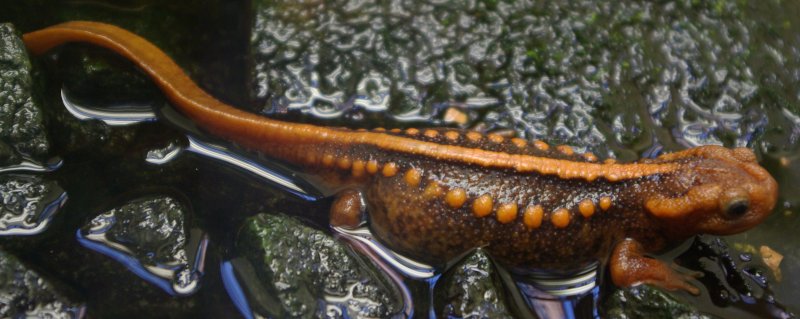Emperor Newt (Tylototriton shanjing) - Wiki Emperor newt
From Wikipedia, the free encyclopedia
[Photo] Emperor Newt (Tylototriton shanjing) at National Zoo, Washington DC. Date June 9, 2007. Author TomR (Thomas Ruedas)
The Emperor newt (Tylototriton shanjing) is a highly toxic newt native to southeast Asia.
Description
The Emperor newt, also known as the Mandarin newt, can grow up to 8 inches long. It has a ridged orange head from which a single orange ridge runs along its back. This ridge is lined with two parallel rows of orange bumps on a black background. The tail is entirely orange. Its legs are also orange. The shade of the orange can be variable.
Range And habitat
Emperor newts live in the highly mountainous province of Yunnan, China, between 1,000 and 2,500 feet above sea level. They inhabit pools and slow-moving streams in subtropical forests.
Defence
The Emperor newt might seem like easy prey because of its bright coloration. However, it is generally nocturnal, and the top of its vertebrae and skull have especially thick bone. Additionally, the orange warts on its back are poison glands, and when the newt is grabbed, the tips of the ribs will squeeze out poison from the glands. Emperor newts have enough toxin to kill approximately 7,500 mice.
Classification
For a long time Emperor Newts were classified together with the Himalayan Newt (Tylototriton verrucosus).
http://en.wikipedia.org/wiki/Emperor_newt
| The text in this page is based on the copyrighted Wikipedia article shown in above URL. It is used under the GNU Free Documentation License. You may redistribute it, verbatim or modified, providing that you comply with the terms of the GFDL. |
